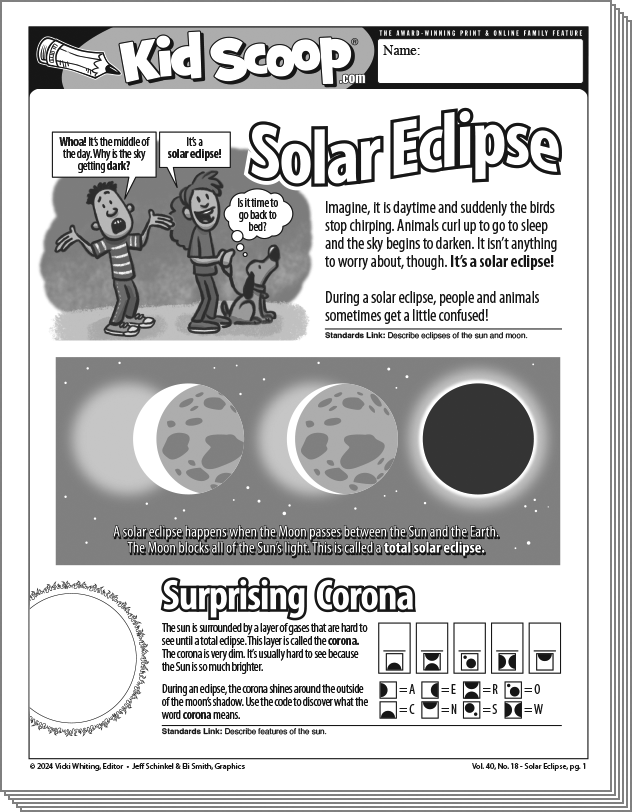 Most days are days and nights are nights. The Sun shines from dawn to dusk until day becomes night again. Animals, plants, and people adjust their wake, sleep, and growth patterns to this dependable rhythm. But what if daytime becomes nighttime in the middle of the day? Animals are confused, the temperature drops, and people can be terrified! Why does the Sun slowly turn black with a glowing halo, and then gradually become the Sun again? Has it been eaten by a dragon as one ancient culture believed? Nope! It’s just business as usual in our fascinating solar system. Knowing it’s only a “solar eclipse” and understanding why it happens every so often takes away the fear—at least from humans—and offers a chance to study this solar phenomenon. Odds are that someday you’ll be able to observe a solar eclipse. This issue will prepare you for that magical moment!
Most days are days and nights are nights. The Sun shines from dawn to dusk until day becomes night again. Animals, plants, and people adjust their wake, sleep, and growth patterns to this dependable rhythm. But what if daytime becomes nighttime in the middle of the day? Animals are confused, the temperature drops, and people can be terrified! Why does the Sun slowly turn black with a glowing halo, and then gradually become the Sun again? Has it been eaten by a dragon as one ancient culture believed? Nope! It’s just business as usual in our fascinating solar system. Knowing it’s only a “solar eclipse” and understanding why it happens every so often takes away the fear—at least from humans—and offers a chance to study this solar phenomenon. Odds are that someday you’ll be able to observe a solar eclipse. This issue will prepare you for that magical moment!
In this issue students will:
- read informational text about solar eclipses
- learn about phases of an eclipse and the sun’s corona
- use context clues to select correct vocabulary
- understand the “path of totality” and best places for viewing a solar eclipse
- follow visual clues to sketch a dragon
- use a newspaper clipping to play “Grammar Eclipse”
- understand how an eclipse impacts the temperature on Earth
- write descriptively to personify the Sun
7 page PDF
